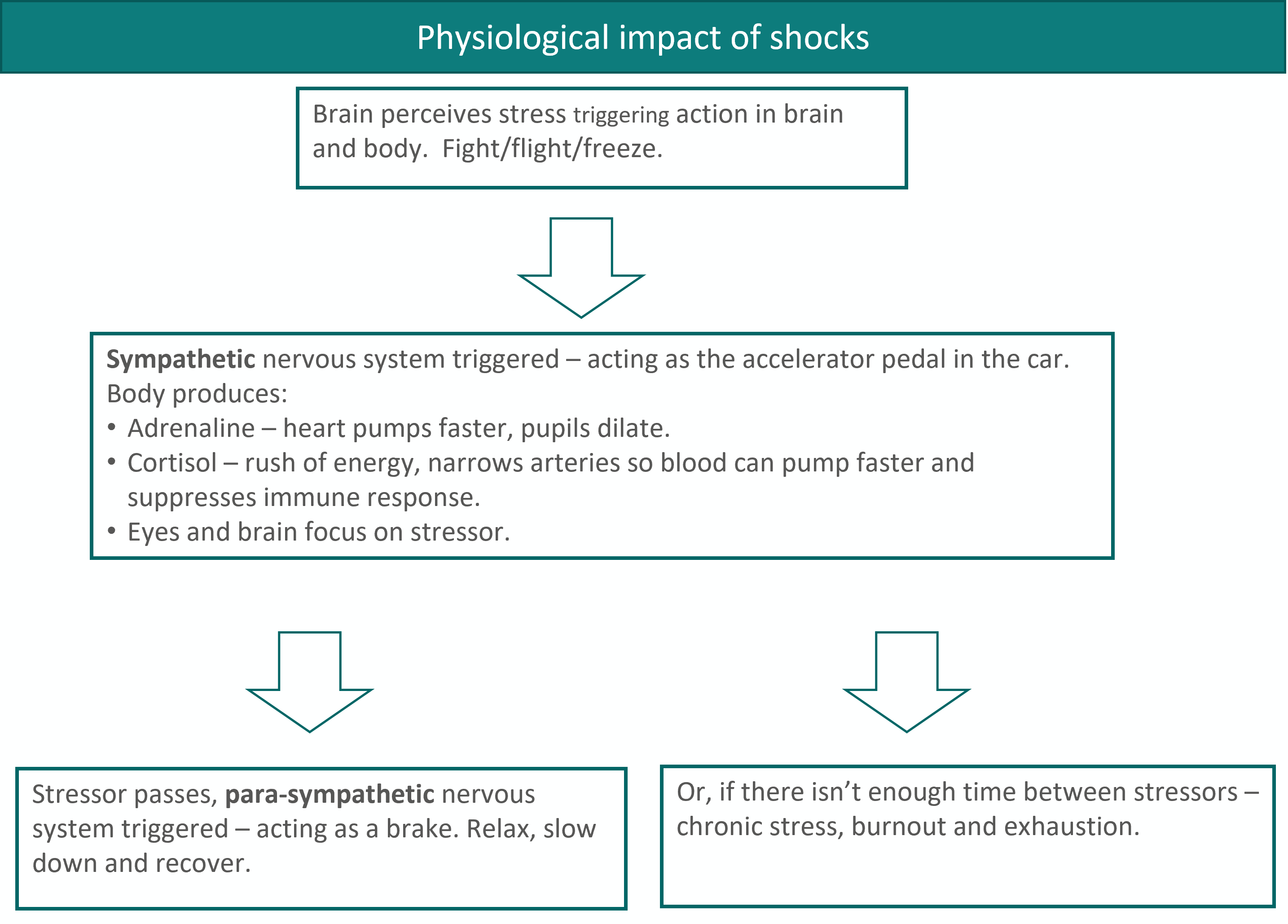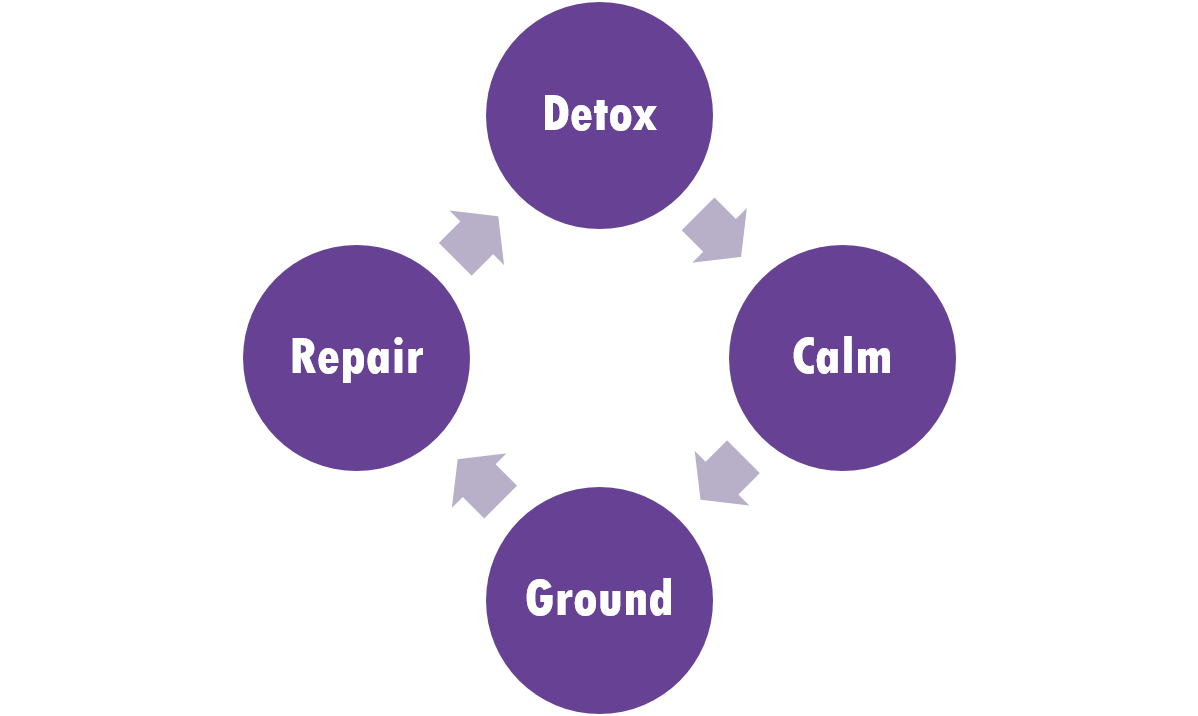Leading Libraries Series: Leading for Resilience
The Leading for Resilience set consists of the following modules:
You are in the Emotional resilience and self regulation module
Emotional resilience and self regulation
The big idea: understanding and managing your 'state"
Importantly, resilience is not just a mental practice – it involves your whole ‘body mind’. At the bodily level, resilience is the ability to recover your emotional balance and thinking capacity quickly after a stressful event. That in turn
helps you to maintain your mental capacity under chronic stress, to stand apart from your troubles and to take a realistically optimistic view of events.
So, what does happen in those moments when we lose our balance – when something happens that creates a ‘shock to our system’ – an unexpected piece of bad news, a sudden argument with someone important, a health scare etc. As you will know,
one of the most important functions of our brains and nervous system is to regulate our bodies – the internal environment that (hopefully) keeps us functioning in our best state. We do this both consciously and unconsciously (e.g. we regulate
our hormones unconsciously but we regulate our intake of fluids consciously).
The illustration below is a way of illustrating what happens to our bodies when we receive a shock – large or small. Our heart rate goes up, adrenaline and cortisol are pumped into our systems and we move into ‘fight/flight/freeze’ mode, even
if it is just for a few seconds – we become ‘disregulated’. A wave of biochemistry passes through our bodies and causes a response specific to that emotion. This wave gradually moves through as the chemicals pass through our body (usually
over about 60-90 seconds).

Understanding the recovery cycle
Many of us have our own ‘common sense’ tactics for making ourselves feel better after a shock of this kind – and many of them work! For example:
Exercising
Moderate aerobic exercise like a brisk walk or cycle clears the adrenalin and cortisol out of your blood stream and our breathing into a more healthy rhythm.
Constructive ranting
Finding a good friend and asking them to listen to you having a good complain about what happened.
Being kind to ourselves
Having a hot bath, eating a favourite dinner or watching a good tv show. The sense of self-parenting can help raise our mood even if the underlying situation isn’t resolved.
However, if you want to improve your resilience, it's also useful to use the body's own recovery processes to bring ourselves back to equilibrium. The ‘Recovery Cycle’, illustrated below, describes each of the main stages we need to go through
as we find our re-find our balance.
The video for this module describes each stage in detail and gives plenty of different practices you can try – there is more in the 'Resource list' at the end of the module.

It is worth making sure you have a good repertoire of these self care tactics so that you are able to draw on them automatically when the going gets tough.
Over the longer term, if you repeat them often enough, these recovery practices will increase your ability to ‘damp’ your emotional responses. Over time, you build your ability to return to equilibrium quickly and even dampen the arousal states
themselves.
Continue to: Building emotional resilience





